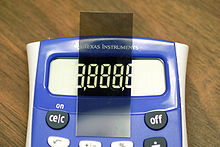 Pantai Baron, pantai paling populer di Gunungkidul,
karena pantai ini adalah pantai pertama yang akan ditemui jika
mengunjungi gugusan kecup mesra laut dan daratan, simbol keelokan wisata
pantai Gunungkidul. Jajaran Pantai Baron, Pantai Kukup, Pantai Sepanjang, Pantai Krakal dan Pantai Sundak berderet di sana, memanjakan pengunjung akan keriuhan ombak pembawa kedamaian kalbu.
Pantai Baron, pantai paling populer di Gunungkidul,
karena pantai ini adalah pantai pertama yang akan ditemui jika
mengunjungi gugusan kecup mesra laut dan daratan, simbol keelokan wisata
pantai Gunungkidul. Jajaran Pantai Baron, Pantai Kukup, Pantai Sepanjang, Pantai Krakal dan Pantai Sundak berderet di sana, memanjakan pengunjung akan keriuhan ombak pembawa kedamaian kalbu.
Pantai Baron terletak di Desa Kemadang, Kecamatan Tanjungsari, sekitar 20 km arah selatan kota Wonosari (40 km dari kota Yogyakarta). Pantai
yang menjadi saksi pertemuan antara air laut dan air tawar, yang
merupakan hasil dari sungai yang bermuara di satu sudut pantai baron,
sebagai perlambang berpadunya dua hati meski dengan perbedaan latar
belakang.
Para wisatawan akan dimanjakan dengan keelokan desir angin yang mengantarkan ombak tuk bercumbu dengan hamparan pasir, begitu sabar menunggu datangnya sang kekasih. Hasil kekayaan Baron seperti udang besar (lobster), ikan bawal putih, kakap, tongkol pun siap memanjakan pengunjung, baik yang masih segar ataupun yang siap saji. Sebagai Rekomendasi, menu andalan di sini adalah Sop Kakap.
Satu momen yang teramat sayang dilewatkan adalah Upacara Sedekah Laut yang diselenggarakan oleh masyarakat nelayan setempat setiap bulan suro dalam kalender jawa, sebagai ungkapan syukur kepada Tuhan Yang Maha Esa atas limpahan hasil laut yang telah diberikan.
Para wisatawan akan dimanjakan dengan keelokan desir angin yang mengantarkan ombak tuk bercumbu dengan hamparan pasir, begitu sabar menunggu datangnya sang kekasih. Hasil kekayaan Baron seperti udang besar (lobster), ikan bawal putih, kakap, tongkol pun siap memanjakan pengunjung, baik yang masih segar ataupun yang siap saji. Sebagai Rekomendasi, menu andalan di sini adalah Sop Kakap.
Satu momen yang teramat sayang dilewatkan adalah Upacara Sedekah Laut yang diselenggarakan oleh masyarakat nelayan setempat setiap bulan suro dalam kalender jawa, sebagai ungkapan syukur kepada Tuhan Yang Maha Esa atas limpahan hasil laut yang telah diberikan.
http://www.wisatagunungkidul.com/2010/01/pantai-baron.html
